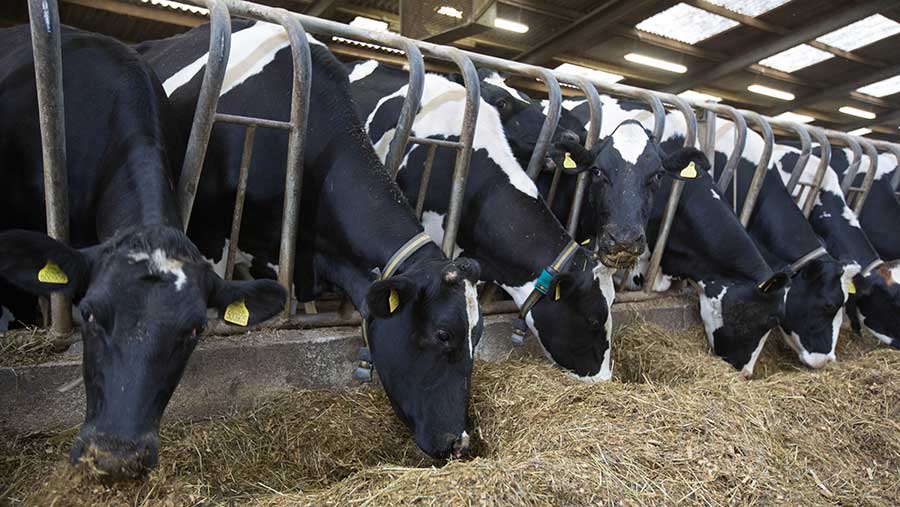Milk fat and protein ratio could unlock herd efficiency
 © Tim Scrivener
© Tim Scrivener Interpreting herd milk butterfat-to-protein ratio could drive improvements across dairy units this New Year, a ruminant nutritionist in the South West has said.
Dairy cow health and feed efficiency can be improved by looking at milk components, which, according to Dr Robin Hawkey of Mole Valley Feed Solutions, should be scrutinised for more than just milk pricing.
Dr Hawkey said the fat-to-protein ratio typically comes “under pressure” in January/February, when milk protein has a tendency to drop. However, with many low dry matter, green silages around the country and low-cost cereals, the balance could shift the other way.
Health risks include ketosis if butterfat is high and acidosis if butterfat is low as a sign of starch fermentation, Dr Hawkey warned.
See also: How to review dairy welfare costs
He explained: “It shouldn’t be a kneejerk reaction. Look at trends in the ratio and also look at what the cows are telling you.
“You can then speak to your nutritionist to discuss if ration changes need to be made. With downward pressure on milk prices set to continue into 2016, it’s vital that rations are balanced effectively so cows are performing efficiently.”
The ratio can be calculated by dividing milk fat per cent by milk protein per cent. The ideal ratio is about 1.27.
Four questions to ask:
- What is the trend in the milk fat-to-protein ratio?
- What is dung consistency like?
- Are cows cudding?
- What is cow condition like?
| Milk butterfat % | Milk protein % | Ratio of fat and protein | Possible interpretation |
| 4.2 | 3.3 | 1.27 | Typical balance |
| 4.4 | 3.2 | 1.37 | Fibre-based fermentation. Possible ketosis |
| 3.8 | 3.2 | 1.18 | Starch-based fermentation. Possible acidosis |
